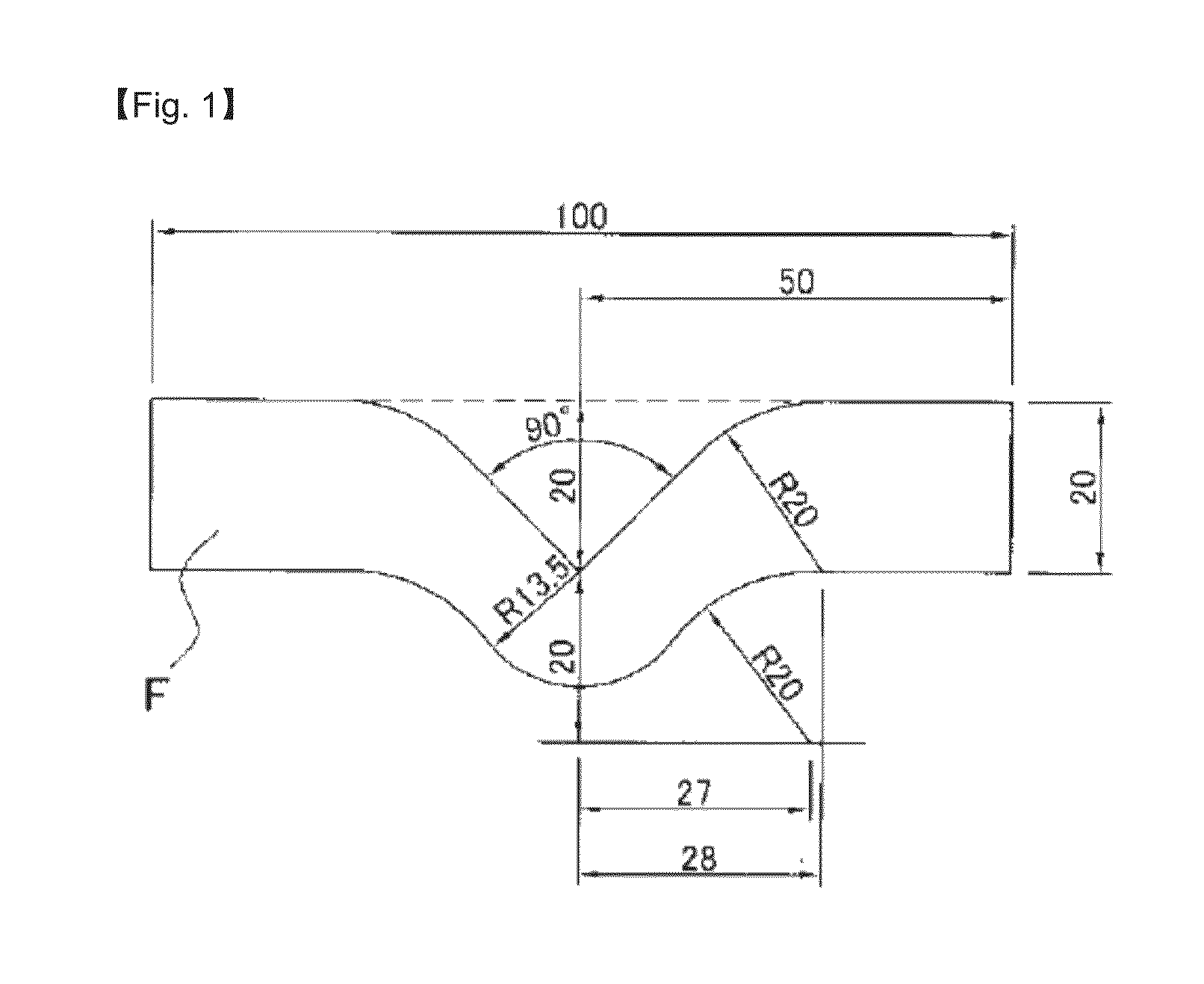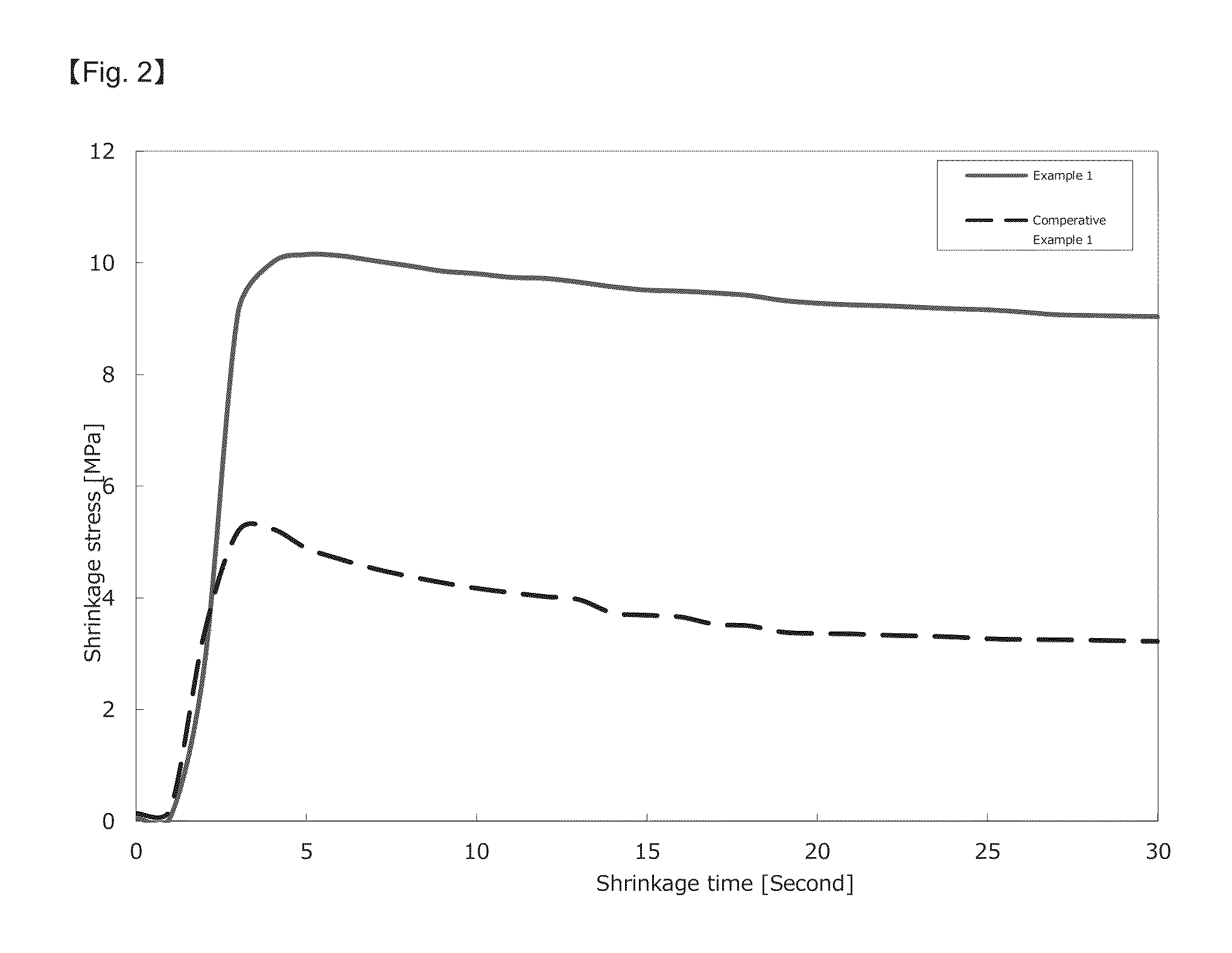Heat-shrinkable polyester film and package
a polyester film and shrinkage technology, applied in the direction of layered products, etc., can solve the problems of high temperature incineration, low heat resistance, abnormal odor, etc., and achieve excellent shrinkage finish properties, easy expansion, and reducing performance during aging
- Summary
- Abstract
- Description
- Claims
- Application Information
AI Technical Summary
Benefits of technology
Problems solved by technology
Method used
Image
Examples
synthetic example 1
[0157]Into an autoclave made of stainless steel equipped with a stirrer, a thermometer and a partial reflux condenser, 100 mol % of dimethyl terephthalate (DMT) as a dicarboxylic acid component and 100 mol % of ethylene glycol (EG) as a glycol component were charged such that ethylene glycol became 2.2 times to dimethyl terephthalate in mole ratio, and using 0.05 mol % (relative to acid component) of zinc acetate as an ester exchange catalyst, and 0.225 mol % (relative to acid component) of antimony trioxide as a polycondensation catalyst, ester exchange reaction was conducted while distilling methanol generated out of the system. Thereafter, polycondensation reaction was carried out at 280° C. under a reduced pressure of 26.7 Pa. A polyester (A) of 0.75 dl / g in intrinsic viscosity was obtained. Composition is shown in Table 1.
synthetic example 2-7
[0158]In the same way as Synthetic Example 1, polyesters B to G shown in Table 1 were synthesized. In the production of polyester F, SiO2 (Silysia 266 manufactured by Fuji Silysia Chemical, Ltd.; average particle diameter 1.5 μm) was added as a lubricant at a proportion of 7,000 ppm relative to the polyester. In the Table, IPA is isophthalic acid, NPG is neopentyl glycol, CHDM is 1,4-cyclohexanedimethanol, BD is 1,4-butanediol, and ε-CL is ε-caprolactone. Regarding the intrinsic viscosity of each polyester, B was 0.72 dl / g, C was 0.80 dl / g, D was 1.20 dl / g, E was 0.77 dl / g, F was 0.75 dl / g and G was 0.78 dl / g. Each polyester was suitably made into chips.
TABLE 1Raw material composition of polyester (mol %)AddedPolyesterAcidEstermount ofrawcomponentPolyhydric alcohol componentcomponentlubricantmaterialTPAIPAEGBDNPGCHDMDEGε-CL(ppm)A100099———1—B100068—30—2—C100067——303—D1000—100————E1000—55———45F100099———1—7000G802085014 01—
example 1
[0159]The above-described polyester A, polyester B, polyester E and polyester F were mixed by 5:75:15:5 in mass ratio, and charged into an extruder. Thereafter, the mixed resin was melted at 280° C. and extruded from a T-die, and quenched by winding it on a rotating metal roll set at a surface temperature of 30° C. An undrawn film of 400 μm thickness was obtained. Tg of the undrawn film was 60° C.
[0160]The obtained undrawn film was introduced to a lengthwise drawing machine in which a plurality of rolls were continuously disposed, and preheated until the film temperature reached 80° C. by a preheat roll. After which, the film was drawn by 4.1 times in the lengthwise direction by using the rotating speed difference between a low-speed rotating roll whose surface temperature was set to 86° C. and a high-speed rotating roll whose surface temperature was set to 86° C.
[0161]The film immediately after the lengthwise drawing was passed through a heating furnace. The inside of the heating f...
PUM
| Property | Measurement | Unit |
|---|---|---|
| RH | aaaaa | aaaaa |
| RH | aaaaa | aaaaa |
| shrinkage | aaaaa | aaaaa |
Abstract
Description
Claims
Application Information
 Login to View More
Login to View More - R&D
- Intellectual Property
- Life Sciences
- Materials
- Tech Scout
- Unparalleled Data Quality
- Higher Quality Content
- 60% Fewer Hallucinations
Browse by: Latest US Patents, China's latest patents, Technical Efficacy Thesaurus, Application Domain, Technology Topic, Popular Technical Reports.
© 2025 PatSnap. All rights reserved.Legal|Privacy policy|Modern Slavery Act Transparency Statement|Sitemap|About US| Contact US: help@patsnap.com



